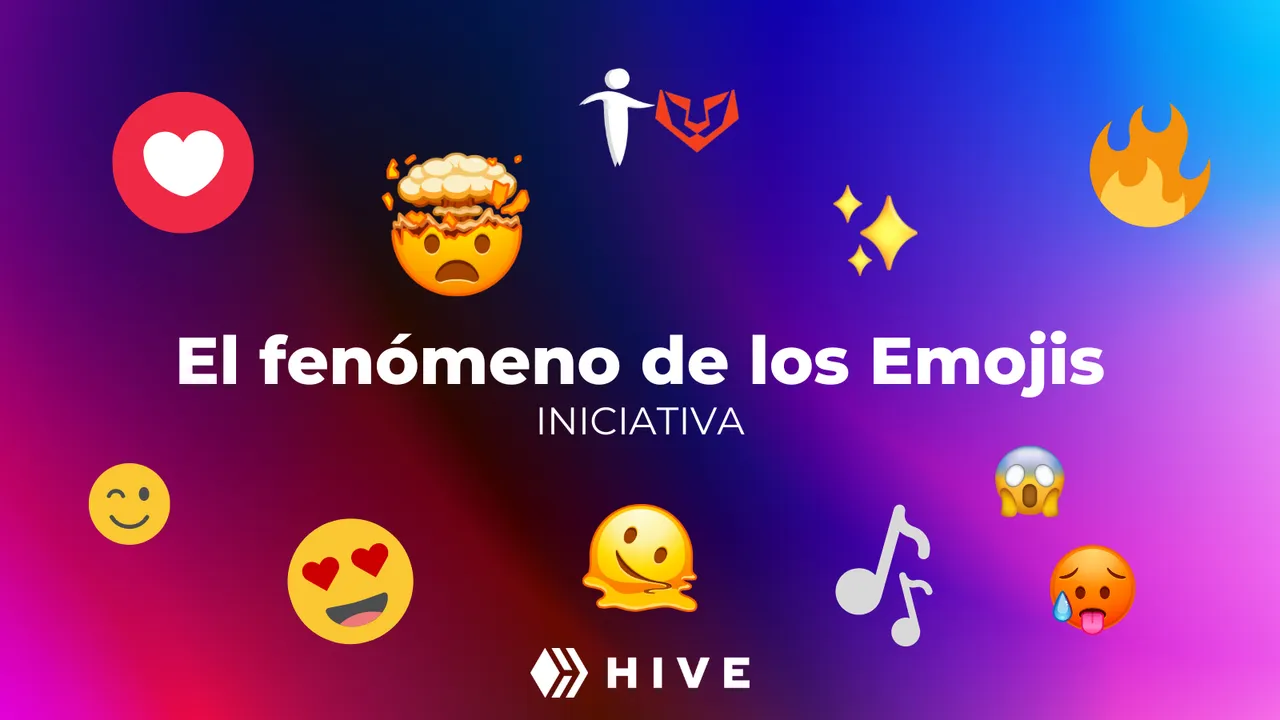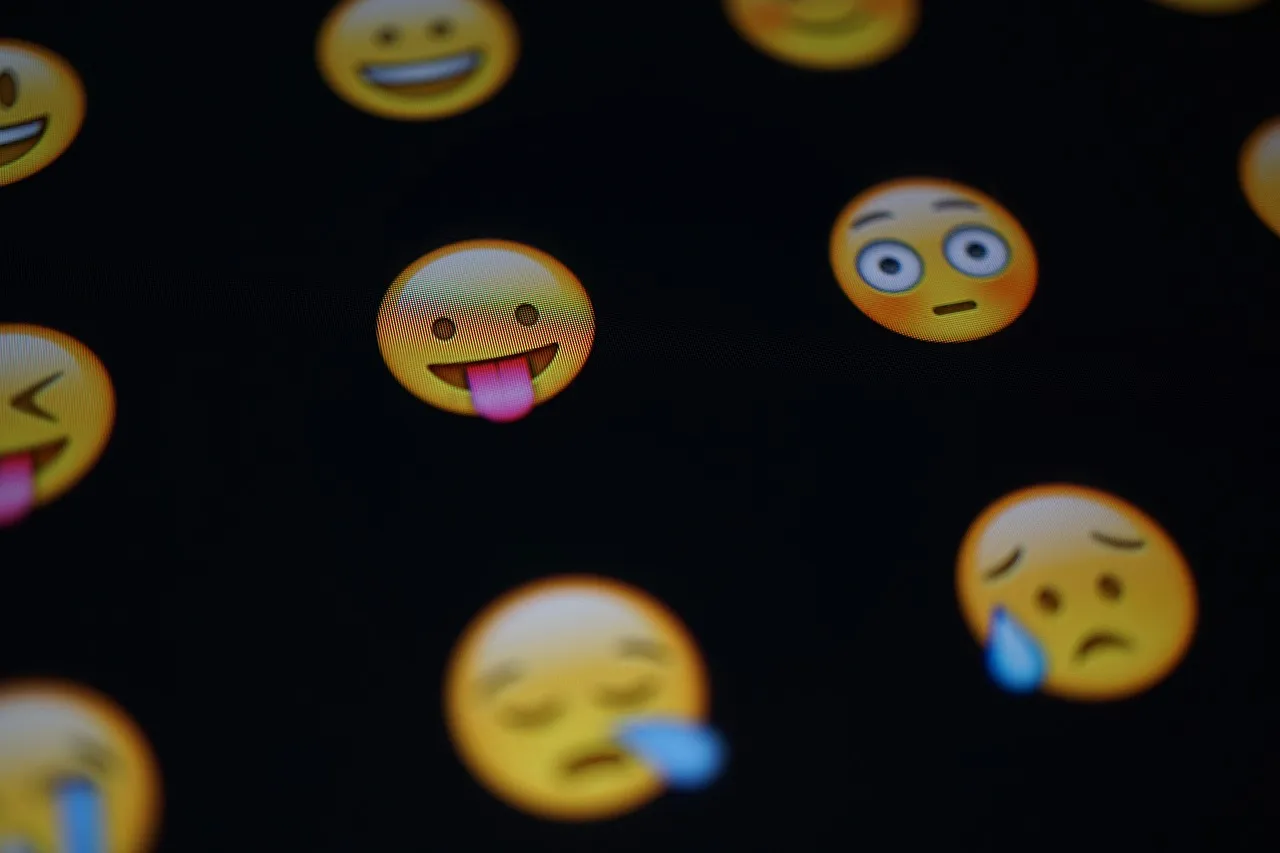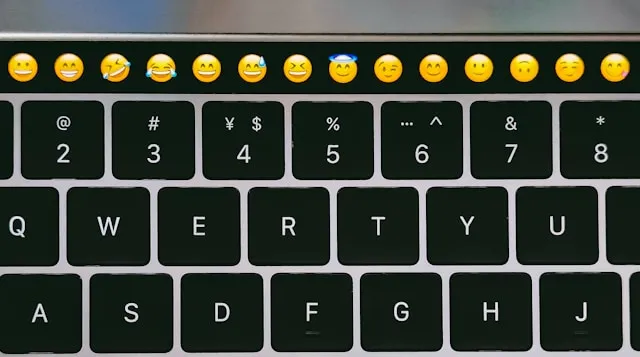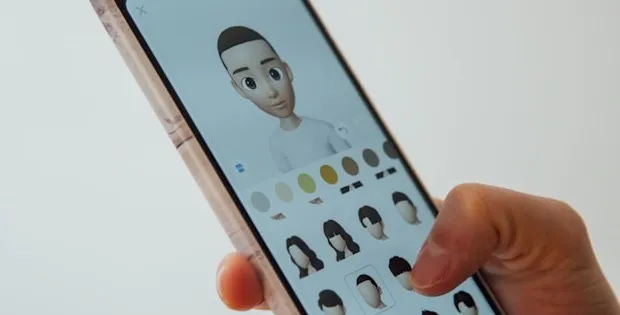Hola amigos, espero que estén teniendo un lindo día. Me he decidido a participar en la iniciativa “El fenómeno de los Emojis”, propuesta por @eudemo, siendo este mi primer post en esta comunidad.

Hablar de emojis a estas alturas parece una tarea vieja, así que no andaremos dentro de conceptos. En su lugar, haré un simple ejercicio de pensar (escribir) libremente.
Los emojis forman ya parte de nuestro día a día y se han mimetizado rápidamente con la palabra escrita, ocupando puestos y emociones que antes eran difíciles de expresar. Saltando entre plataformas, cada una con su estilo de diseño y peculiaridades. Van más allá de objetos y palabras, convirtiéndose en emociones complejas que se desligan del significado original que les fue otorgado a las imágenes. Incluso nosotros mismos quizás tengamos nuestro diccionario de emojis particular, que responde a situaciones y vivencias únicas y pocas personas pueden comprenderlo.

Tomemos de ejemplo el emoji del agujero en el piso 🕳️. Puede representar literalmente un agujero en el piso, pero quizás si te lo envían después de una noticia triste, puede representar un agujero emocional. O si dices: “Tengo hambre 🕳️”, puede representar que tienes un agujero en el estómago (figurativamente). Y ahí creo que reside la mayor magia de comunicarse con pictogramas: cada persona lo dota de su propio significado más allá de arquetipos.
La representación de sentimientos y emociones a través de los emojis también tiene una peculiar forma de comportarse. Por ejemplo, cada emoji de corazón y su color transmite un sentimiento distinto, pero que culturalmente puede cambiar.
Algo muy interesante es la distribución en la que siempre se encuentran los emojis. Siempre encontramos en primer lugar, representados con rostros humanos a su mínima expresión. Estos emojis representan sentimientos: alegría, frustración, miedo… Después llegan los objetos, alimentos, transporte, lugares, símbolos, etc., con pocas variaciones, pero ahí están siempre. Una combinación de estos grupos nos da una posibilidad casi infinita a los emojis para transmitir prácticamente cualquier mensaje.
Me gustaría dedicar la última parte de este blog para responder algunas de las preguntas planteadas que considero muy interesantes.

Preguntas:
- ¿Se pueden considerar los emojis un lenguaje universal?
Hasta cierto punto, podría considerarlos un lenguaje universal, pero personalmente, parecen ser una herramienta de complemento y apoyo para formular ideas que pueden ser extremadamente difíciles de decir con palabras o ideas que pueden por sí solas tener cierto grado de universalidad. Sin embargo, como decía anteriormente, los emojis pueden no escapar de ataduras culturales como el significado de ciertas poses y colores.
- ¿Han transformado los emojis la forma en que nos comunicamos?
Sin dudas, han transformado nuestra forma de comunicarnos, agregando simplicidad y velocidad a las conversaciones, incluso superando barreras lingüísticas. Logrando también un efecto de atención automática sobre ciertos puntos en la conversación, pero no creo que sea un fenómeno nuevo o que ya esté 100% desarrollado en su totalidad. Los emojis irán evolucionando según aparezcan nuevas necesidades comunicativas.

- ¿Los emojis han enriquecido o empobrecido el lenguaje?
Sin dudas, repito, los emojis son una herramienta o complemento al lenguaje escrito, por lo tanto, no creo en el empobrecimiento del idioma por el uso de emojis. El mensaje final es total responsabilidad de la persona que lo escribe y es vital que se entienda. Si los emojis no están transmitiendo el sentimiento y dificultando el lenguaje, simplemente lo estás haciendo mal.
- ¿Qué papel jugarán los emojis en el futuro de la comunicación digital?
Al día de hoy, vemos que los emojis han mutado y continuarán mutando a formas más complejas. Ya tenemos stickers, animaciones, incluso emojis en Realidad Aumentada. Cada día son más diversos y representativos, reflejando más la sociedad actual. Por lo tanto, no es descabellado pensar en su papel comunicativo de vital importancia en el futuro, quizás llegando a sitios hasta el momento vetados para ellos por la seriedad y, a veces, la forma infantil en que se ven los emojis. Hablo de lugares empresariales, gobierno e incluso medicina, pero creo que el futuro en la actualidad es excesivamente vertiginoso y solo el tiempo tiene las palabras finales.

Bueno, espero que hayas disfrutado leyendo. Me encantaría escuchar tus opiniones sobre estos temas y si me respondes en los comentarios con emojis, mejor 😁. Un gran saludo y muchos éxitos. ¡Hasta la próxima!

Hello friends, I hope you are having a nice day. I have decided to participate in the initiative "The Emoji Phenomenon", proposed by @eudemo, this being my first post in this community.

Talking about emojis at this point seems like an old task, so we won't go into concepts. Instead, I will do a simple exercise of free thinking (writing).
Emojis are already part of our daily lives and have quickly mimicked the written word, occupying positions and emotions that were difficult to express before. Jumping between platforms, each one with its own design style and peculiarities. They go beyond objects and words, becoming complex emotions that are detached from the original meaning that was given to the images. Even we ourselves may have our own particular emoji dictionary, which responds to unique situations and experiences and few people can understand it.

Let's take as an example the emoji of the hole in the floor 🕳️. It can literally represent a hole in the floor, but maybe if you send it after a sad news, it can represent an emotional hole. Or if you say: "I'm hungry 🕳️", it can represent that you have a hole in your stomach (figuratively). And therein I think lies the greatest magic of communicating with pictograms: each person endows it with his or her own meaning beyond archetypes.
The representation of feelings and emotions through emojis also has a peculiar way of behaving. For example, each heart emoji and its color transmits a different feeling, but that culturally can change.
Something very interesting is the distribution in which the emojis are always found. We always find them in first place, represented with human faces to their minimum expression. These emojis represent feelings: joy, frustration, fear... Then come objects, food, transportation, places, symbols, etc., with few variations, but they are always there. A combination of these groups gives us an almost infinite possibility to emojis to transmit practically any message.
I would like to dedicate the last part of this blog to answer some of the questions raised that I consider very interesting.

Questions:
- Can emojis be considered a universal language?
To a certain extent, I could consider them a universal language, but personally, they seem to be a complement and support tool to formulate ideas that can be extremely difficult to say with words or ideas that can by themselves have a certain degree of universality. However, as I was saying before, emojis may not escape from cultural ties such as the meaning of certain poses and colors.
- Have emojis transformed the way we communicate?
Undoubtedly, they have transformed our way of communicating, adding simplicity and speed to conversations, even overcoming linguistic barriers. They have also achieved an automatic attention effect on certain points in the conversation, but I do not think it is a new phenomenon or that it is already 100% developed in its entirety. Emojis will evolve as new communicative needs appear.

- Have emojis enriched or impoverished the language?
Undoubtedly, I repeat, emojis are a tool or complement to the written language, therefore, I do not believe in the impoverishment of the language by the use of emojis. The final message is the total responsibility of the person who writes it and it is vital that it is understood. If emojis are not conveying the sentiment and hindering the language, you are simply doing it wrong.
- What role will emojis play in the future of digital communication?
As of today, we see that emojis have mutated and will continue to mutate into more complex forms. We already have stickers, animations, even emojis in Augmented Reality. Every day they are more diverse and representative, reflecting more the current society. Therefore, it is not unreasonable to think of their vital communicative role in the future, perhaps reaching places so far vetoed for them by the seriousness and, sometimes, the childish way in which emojis are seen. I speak of business places, government and even medicine, but I believe that the future at present is excessively vertiginous and only time has the final words.

Well, I hope you enjoyed reading. I'd love to hear your opinions about these topics and if you answer me in the comments with emojis, even better 😁. Big greetings and many successes. see you next time!

Translated with DeepL.com (free version)
Cover obtained from the initiative’s publication.
Image by Florian Pircher from Pixabay
Foto de Denis Cherkashin en Unsplash
Foto de wu yi en Unsplash
Foto de charlesdeluvio en Unsplash
All assets, illustrations and banners have been created by me and are original content, unless otherwise specified.
